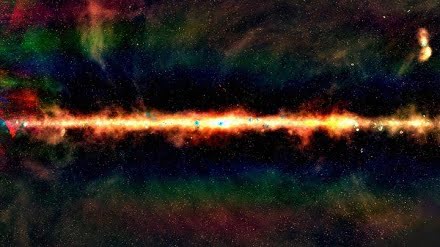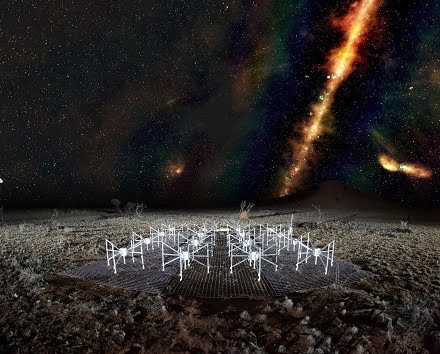CRAWLEY, Australia, Nov. 4, 2016— Imagine being able to “see” radio waves. The Murchison Widefield Array (MWA) telescope can do just that by showing the viewer what the Universe would look like if human eyes could in fact see radio waves. The GaLactic and Extragalactic All-sky MWA, or GLEAM survey has produced a catalogue of 300,000 galaxies in what researchers are describing as “technicolor” in nature.
The human eye sees brightness by comparing three different primary colors of red, green and blue. According to lead author Natasha Hurley-Walker, of Curtin University and the International Centre for Radio Astronomy Research (ICRAR), GLEAM views the sky in 20 primary colors.

"That's much better than we humans can manage, and it even beats the very best in the animal kingdom, the mantis shrimp, which can see 12 different primary colors," she said.
The GLEAM view of the center of the Milky Way is in radio color. Red indicates the lowest frequencies, green indicates the middle frequencies and blue the highest frequencies. Each dot is a galaxy, with around 300,000 radio galaxies observed as part of the GLEAM survey. Courtesy of Natasha Hurley-Walker (Curtin / ICRAR) and the GLEAM Team.
GLEAM is a large-scale, high-resolution survey of the radio sky observed at frequencies from 70 to 230 MHz. It is observing radio waves that have been travelling through space, some for billions of years.
Hurley-Walker’s team is using the survey to find out what happens when clusters of galaxies collide.
"We're also able to see the remnants of explosions from the most ancient stars in our galaxy, and find the first and last gasps of supermassive black holes."
GLEAM is one of the biggest radio surveys of the sky ever assembled. MWA director and associate professor Randall Wayth, of Curtin University and ICRAR, said the achievements of the research team and the MWA telescope are quite significant.
"The area surveyed is enormous,” he said. “Large sky surveys like this are extremely valuable to scientists and they're used across many areas of astrophysics, often in ways the original researchers could never have imagined."

A "radio color" view of the sky above a "tile" of the Murchison Widefield Array radio telescope, located in outback Western Australia. The Milky Way is visible as a band across the sky and the dots beyond are some of the 300,000 galaxies observed by the telescope for the GLEAM survey. Red indicates the lowest frequencies, green the middle frequencies and blue the highest frequencies.
Courtesy of Natasha Hurley-Walker (ICRAR/Curtin) and the GLEAM Team. MWA tile and landscape by Dr. John Goldsmith / Celestial Visions.
According to the researchers, completing the GLEAM survey with the MWA is a big step on the path to SKA-low — the low frequency part of the international Square Kilometre Array (SKA) radio telescope to be built in Australia in the coming years. By mapping the sky with MWA, they can fine tune the design for the future.
The study was published in Monthly Notices of the Royal Astronomical Society (arXiv:1610.08318).